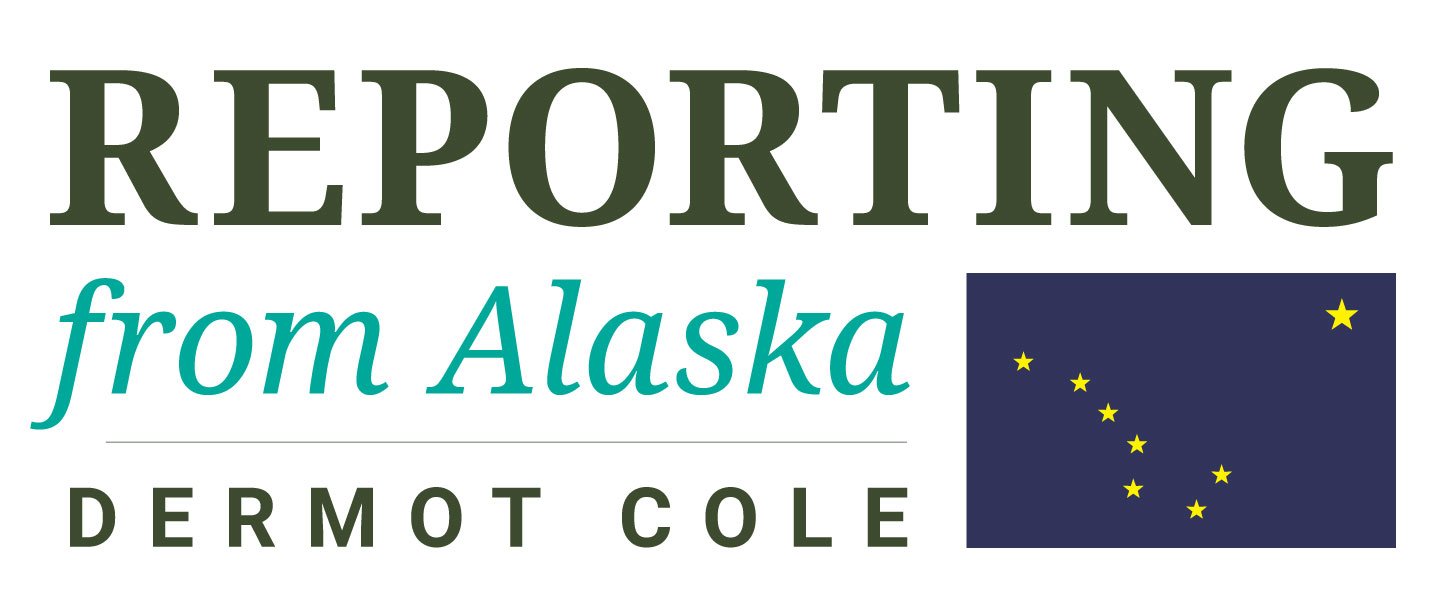Plans to cut Alaska corporate taxes to unleash growth are repackaged snake oil
We’re supposed to take it on faith from Kenai Rep. Ben Carpenter, the acolyte who put former temporary budget director Donna Arduin back on the state payroll, that cutting the Alaska corporate income tax to the lowest in the nation will lead to great gains in productivity and jobs.
We are supposed to believe that if Alaska cuts taxes on Wal-Mart and Kroger and AT&T, it won’t be long before food and phones will be cheaper and more people will be employed in Alaska.
All thanks to the miracle of trickle-down economics. The tax cut would total about $328 million a year.
When Arduin was budget director, earning more than the $45 an hour she now gets, Gov. Mike Dunleavy was claiming that we needed to head off “predatory taxes” in Alaska to unleash economic growth.
As soon as that happened, “You’re going to see investment flowing into Alaska like you’ve never seen before,” he predicted in 2019.
As I wrote at the time, it was all too much like miracles and magic beans.
This year the old snake oil has been reformulated as HB 109, a measure that will not be approved by the Legislature, though it distracts attention from a tax measure that the state should pass—ending the Hilcorp corporate loophole and reducing the per barrel taxable credits on legacy oil fields.
I spent more time than I should have Tuesday listening to the recording of the sales pitch Carpenter made on cutting corporate income taxes March 27. It was not a worthwhile experience, unless you value the mindless chanting of simplistic claims that cutting taxes is the key to economic salvation.
The complexity of our situation is such that anyone who makes such predictions should be laughed out of the room.
Carpenter, Arduin and the rest are acting out of a rigid political mindset, not economic research. Much of the latter contradicts their formula for success.
“We can conclude that state and local tax fiscal policy is not predictably a major driver of economic growth in the U.S., particularly in more recent decades,” economists Dan Rickman and Hongbo Wang of Oklahoma State University have concluded. “There does not appear to be any economic benefit from deviating greatly from other states in the structure of state and local fiscal policy.”
What I found disturbing in Carpenter’s presentation is that major parts of it were lifted from the Tax Foundation, a reliably right-wing entity, with no attribution. The failure to attribute shows a dearth of analysis and ignorance about plagiarism. Carpenter’s sponsor statement also includes purloined letters.
Carpenter had one of his lower-level employees read passages from Tax Foundation publications as if they were written by him or his staff.
“Graduated corporate rates are inequitable—that is, the size of a corporation bears no necessary relation to the income levels of the owners. Indeed, low-income corporations may be owned by individuals with high incomes, and high-income corporations may be owned by individuals with low incomes,” Carpenter said in his presentation to the House Ways & Means Committee.
(The text quoted above was actually written by Loyola Law Professor Jeffrey Wall, first published in a 2011 research paper about federal tax rates. The Tax Foundation quotes the identical passage in the 2023 State Business Climate Tax Index. The tax index report is worth reading because it looks at a variety of factors and concludes that Alaska has the third best business tax climate out of the 50 states, mainly because there is no individual income tax or state sales tax. Carpenter did not quote the high Alaska ranking on the business climate tax index, which complicates the flim-flam he is passing off as research.)
(Most importantly, the Tax Foundation quoted Wall’s paper out of context, which means Carpenter did the same. Wall’s paper, which was all about federal taxes, argued that the government should apply the top corporate tax rate, then 35 percent, to all corporations, repealing the lower marginal tax rates.)
Carpenter also had his employee read the two statements below, presenting them as his work or that of his office:
“People pay all taxes. When the government levies a tax on a corporation, the corporation is more like a tax collector than a taxpayer. The burden of the tax ultimately falls on people—the owners, customers, or workers of the corporation.”
“The corporate income tax is popular in part because it appears to be paid by rich corporations. Yet those who bear the ultimate burden of the tax—the customers and workers of corporations—are often not rich. If the true incidence of the corporate tax were more widely known, this tax might be less popular among voters.”
(The two paragraphs quoted above are from a textbook case study, quoted in this 2006 blog by Harvard economist Greg Mankiw. The Tax Foundation quoted the material in this May 4, 2006 post. The material is about the federal corporate tax, then 35 percent. It was written years before the Supreme Court said that corporations are people too.)
The new version of Carpenter’s bill, which was up for a public hearing Tuesday and will be heard again Wednesday at 6 p.m., combines his corporate tax cut with a 2 percent sales tax, which might bring the state $1 billion a year. It would require hiring about 75 more state employees.
This is not fiscal planning as much as tossing out random ideas that haven’t been thought through or justified.
Your contributions help support independent analysis and political commentary by Alaska reporter and author Dermot Cole. Thank you for reading and for your support. Either click here to use PayPal or send checks to: Dermot Cole, Box 10673, Fairbanks, AK 99710-0673.
dermotmcole@gmail.com
